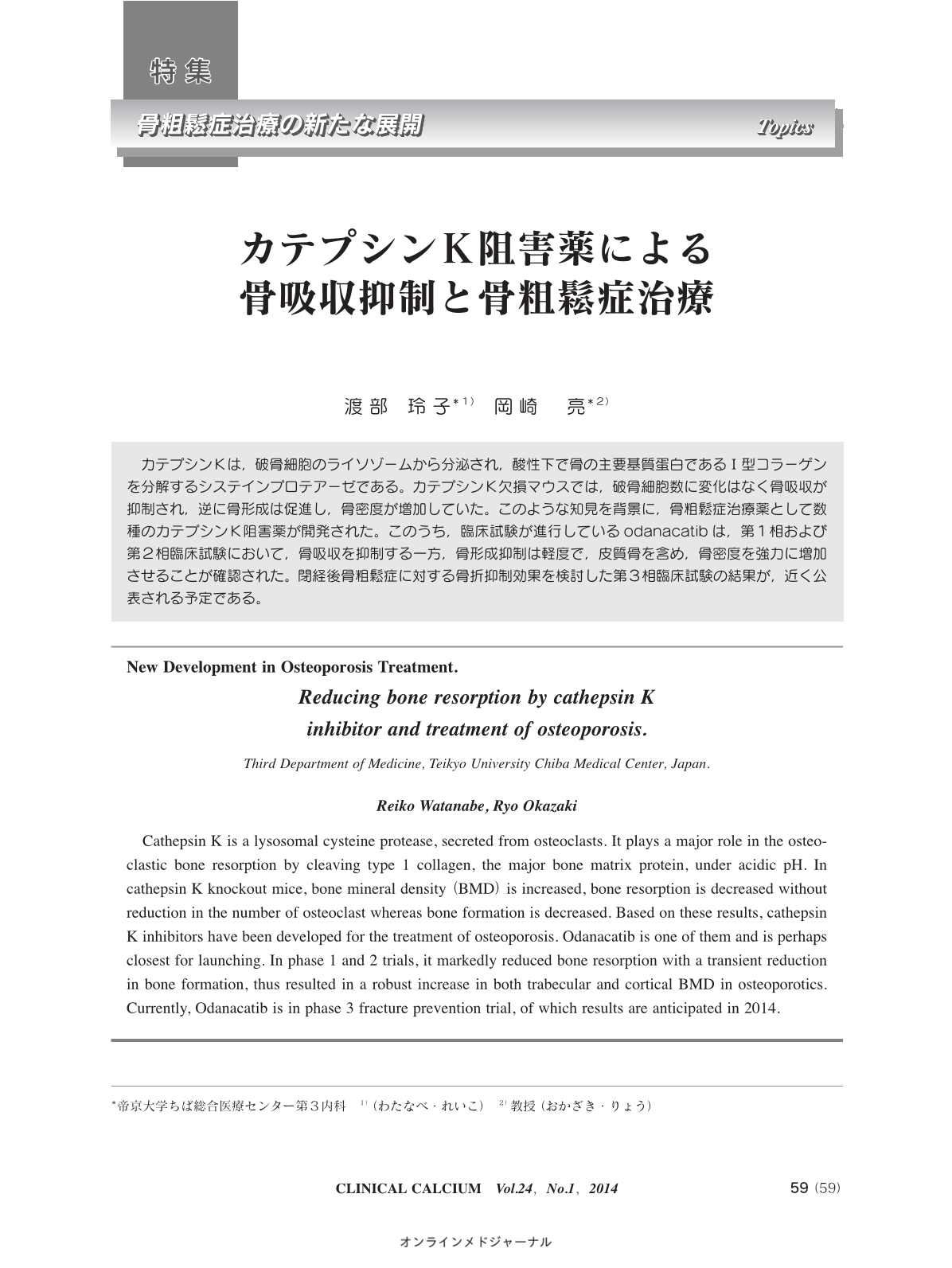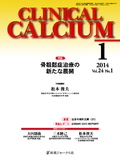Japanese
English
- 有料閲覧
- Abstract 文献概要
- 1ページ目 Look Inside
- 参考文献 Reference
カテプシンKは,破骨細胞のライソゾームから分泌され,酸性下で骨の主要基質蛋白である I 型コラーゲンを分解するシステインプロテアーゼである。カテプシンK欠損マウスでは,破骨細胞数に変化はなく骨吸収が抑制され,逆に骨形成は促進し,骨密度が増加していた。このような知見を背景に,骨粗鬆症治療薬として数種のカテプシンK阻害薬が開発された。このうち,臨床試験が進行しているodanacatibは,第1相および第2相臨床試験において,骨吸収を抑制する一方,骨形成抑制は軽度で,皮質骨を含め,骨密度を強力に増加させることが確認された。閉経後骨粗鬆症に対する骨折抑制効果を検討した第3相臨床試験の結果が,近く公表される予定である。
Cathepsin K is a lysosomal cysteine protease, secreted from osteoclasts. It plays a major role in the osteoclastic bone resorption by cleaving type 1 collagen, the major bone matrix protein, under acidic pH. In cathepsin K knockout mice, bone mineral density(BMD)is increased, bone resorption is decreased without reduction in the number of osteoclast whereas bone formation is decreased. Based on these results, cathepsin K inhibitors have been developed for the treatment of osteoporosis. Odanacatib is one of them and is perhaps closest for launching. In phase 1 and 2 trials, it markedly reduced bone resorption with a transient reduction in bone formation, thus resulted in a robust increase in both trabecular and cortical BMD in osteoporotics. Currently, Odanacatib is in phase 3 fracture prevention trial, of which results are anticipated in 2014.



